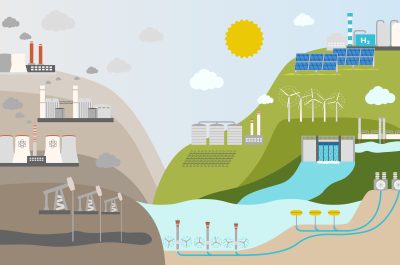Is it fair that some solar fares better than others?
Previously we looked at the relationship between solar PV, the electricity network and the common thread of voltage that binds the two together. This week we continue the conversation by focusing on how all stakeholders, including customers (with and without solar) and networks, can bridge the gap and work towards a common vision.
Let’s work together with an eye on costs
Controlling cost is a key part of any responsible business. Its importance gets magnified when your costs also impact the power bills of almost 10 million customers who don’t always want the same things. It also means that you have to make some hard decisions between what you can or can’t invest in.
But this doesn’t automatically mean no one gets what they want. In fact, many networks have heard that their customers want investment to make the grid accept more solar export. Feedback from CitiPower Powercor’s customers has resulted in a significant investment proposal to increase allowable solar exports in those networks.
To be clear, I’m not saying that this should happen everywhere in the NEM, because circumstances and customer needs in each jurisdiction can be very different. For example, because of the level of smart meter penetration/capability is different in Victoria, what works there might need adjustment for say New South Wales. But what I want to illustrate is that while each jurisdiction might have a different starting point and factors to consider, there are common goals we all share such as listening to and adapting to the needs of the majority of customers who want greater solar enablement.
Networks’ purpose is to provide an essential service (safe, cheap and reliable power) to all customers; this includes both owners of rooftop solar and those who don’t. Unfortunately, it wasn’t built so that all solar PV owners could export into the grid freely. The essential service that networks provide is to supply electricity to all customers safely, reliably and cost-effectively.
If networks could allow unlimited solar export without voltage or cost implications, they would. While solar PV installations are a rapidly increasing feature of our distribution networks (roughly 1 in 5), it is important to note the majority of customers don’t have solar PV.
As the uptake of rooftop solar and other renewable energy grows, Networks want to support customers’ choices, but this is a massive task that needs all facets of the industry working together and not at odds to steer it towards a better outcome.
Networks are working hard, but you may not know it
On the 7:30 Report, we heard that not many people know what networks are doing to resolve voltage issues. You would be forgiven if you didn’t know what your local Network Service Providers (NSP) is doing in transforming their network. The simple fact is most networks tend to focus on doing the work (developing, implementing research projects or trials) rather than advertising their efforts to the general public.
For those of you who don’t know the Australian Renewable Energy Agency (ARENA), it is a federal agency that funds research projects aimed at advancing renewable energy technologies. I encourage you to have a look at the ARENA project list where you will find NSPs are heavily involved in many projects over a variety of categories, but particularly in the field of distributed energy resources (DER).
This, of course, doesn’t include all the work that is done internally within NSPs or pursued through other funding mechanisms which aren’t public knowledge.
It’s hard to fully grasp the extent of the regulatory work that’s required too, as the AEMC recently noted in FY2019-20 when they completed 48 rule changes, which is the most in a single year and this trend is set to continue. Needless to say, DER and by extension voltages has been a popular topic for recent rule changes.
The huge effort that NSPs are making to ensure we meet the current and future needs of customers sometimes don’t seem like much on the outside, but as the saying goes “don’t judge a book by its cover”.
You can see some of the more recent related efforts listed in my last article here.
We’re all in this together
Most people are and will continue to be connected to the grid as a means to receive electricity or export solar energy for the foreseeable future. It is critical that the issues (including voltages and fair solar export) be addressed collaboratively, with the needs of all customers at the forefront.
It’s not about solar v. industry or customers with solar v. those without. A more constructive approach is acknowledging that while we have our own views all stakeholders whether they are customers, networks, solar advocates and others should contribute to the common vision of a safe, reliable, cost-effective and sustainable energy system.


